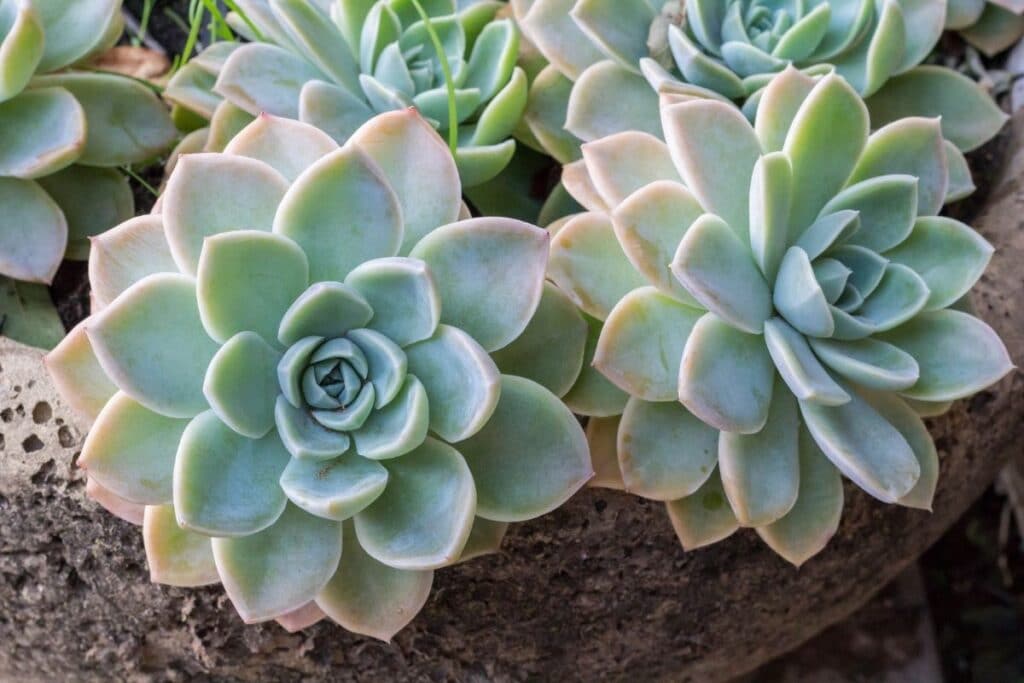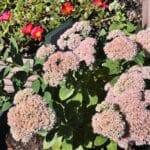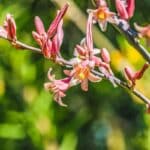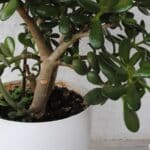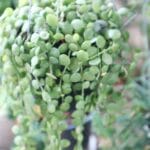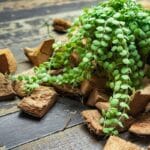Echeveria (Echeveria spp.) is an extensive genus of succulent plants from the family Crassulaceae. Native to the semi-desert regions of Mexico, Central America, and South America, these plants made their way to our homes as popular ornamental plants (1,2).
- How to Grow and Care for Echeveria Plants
- The Best Varieties of Echeveria You Can Grow
- E. affinis (Black Knight)
- E. 'Afterglow’
- E. agavoides (Molded Wax Agave)
- E. amoena
- E. 'Arlie Wright’
- E. 'Black Prince'
- E. 'Blue Frills'
- E. ‘Blue Sky’
- Echeveria x bombycine
- E. ‘Briar Rose’
- E. ‘Bumps’
- E. chihuahuensis
- E. colorata ‘Mexican Giant’ (Mexican Giant Echeveria)
- E. 'Compton carousel''
- E. 'Curly Locks'
- E. ‘Cubic Frost’
- E. ‘Cupeno’
- E. derenbergii (Painted Lady)
- E. ‘Derenceana’
- E. diffractens (Shattering Echeveria)
- E. ‘Dionysus’
- E. 'Doris Taylor'' (Woolly Rose)
- E. elegans (Mexican Snowball)
- E. ‘Encantada’
- E. ‘Etna’
- E. ‘Fire Light’
- E. ‘Galaxy Blue’
- E. harmsii (Ruby Slippers)
- E. imbricata (Blue Rose Echeveria)
- E. lauii
- E. leucotricha (Chenille Plant)
- E. lilacina (Ghost Echeveria)
- E. lutea (Yellow echeveria)
- E. minima
- E. nodulosa (Painted Echeveria)
- E. 'Perle von Nurnberg'
- E. ‘Princess Blue’
- E. pulvinata 'Ruby’
- E. purpusorum
- E. ‘Raindrops’
- E. runyonii ‘Topsy Turvy’
- E. ‘Set-Oliver’
- E. setosa (Mexican Firecracker)
- E. subrigida ‘Fire and Ice’ (Red Edge Echeveria)
- E. tolimanensis
- E. ‘Violet Queen’
- FAQs
An Echeveria plant can grow as branching, shrubby succulents, or stemless, low-growing plants. They have fleshy leaves growing in symmetrical rosettes that can reach up to 12 inches in diameter.
Depending on the variety, the leaves can vary in color from glabrous grey-green, deep blue, burgundy, to neon pink. They can also be covered in a waxy or powdery coating (farina), knobby outgrowths (carunculations), or fine translucent hairs (2,3).
Every spring, you might catch your Echeveria plants bloom into stunning, vibrantly colored, bell-shaped flowers (3).

How to Grow and Care for Echeveria Plants
One reason for the popularity of Echeveria plants is their easy to care for nature. These plants are low maintenance and can survive a couple of days of neglect. Of course, in order to achieve the best growth, they must meet all their requirements.
Here are some care tips for your Echeveria plants.
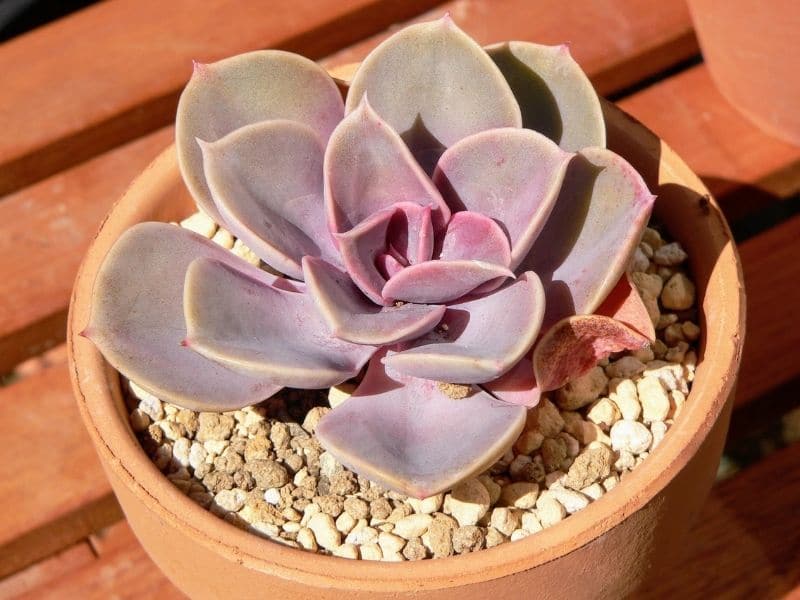
How much light does Echeveria need?
Echeveria is a shade-tolerant plant. Growing echeveria in low light conditions, which is why they are perfect as indoor plants. But they are still plants that need the sun to thrive beautifully. So, place your plants in an area where they can receive lots of bright indirect light.
Some varieties will take on a pinkish hue under direct sunlight. If you want to achieve this beautiful coloration, place your plants outside to soak up the sun for at least four hours. The morning light is best for succulents because it is gentler and will not burn the leaves. Come noon, shield your plants from the harsh afternoon sun by placing them in shaded areas (3,4).
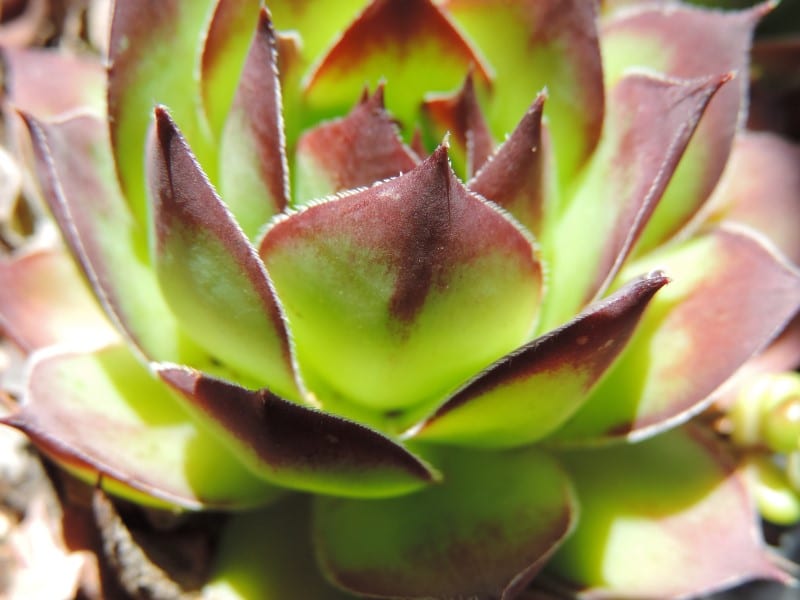
How often should you water Echeveria?
The best thing about succulents like Echeveria is their drought-tolerant nature. In the wild, they can bounce back from long periods of drought. In fact, with these plants, it is best to err on the drier side than the wet.
They can survive even if you miss a couple of waterings, but if you overwater them, there is no returning once root rot sets in.
For the best growth, these plants prefer a slightly moist, but not soggy, soil. To achieve this balance, only water your plants if the top ½ inch of the potting soil is dry to the touch. Watering should be done regularly during spring and summer and sparsely during winter (3,4).
You should wait until the new plant’s roots have grown before watering it.
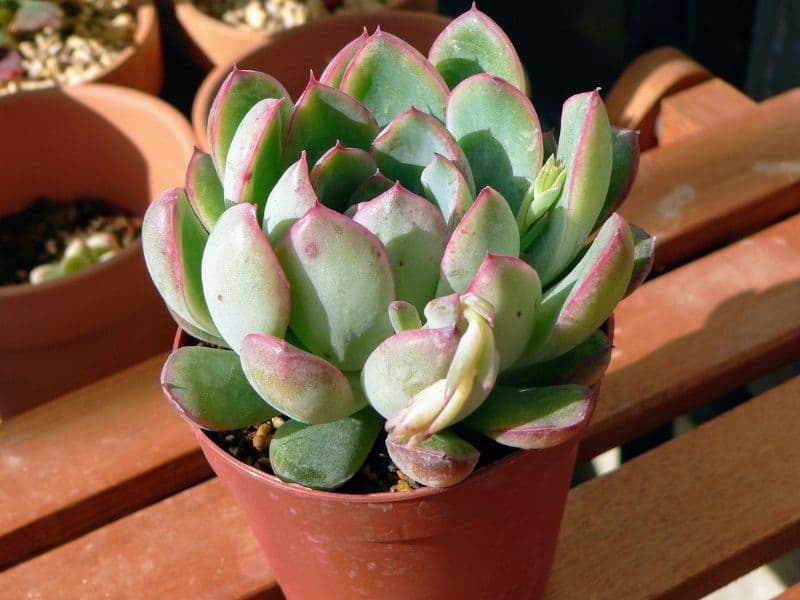
What is the optimum temperature and humidity for Echeveria?
Except for some hybrids, most varieties of Echeveria are cold hardy and can tolerate frost. They are also well adapted to high temperatures. But the best temperatures for optimal growth of Echeveria plants are at 65 to 80oF during spring and summer and 55 to 75oF during fall and winter (3).
As for humidity requirements, Echeveria plants prefer low to average humidity. Avoid misting your plants, as excess moisture can encourage root rot.
What is the best potting/growing media for Echeveria?
Echeveria plants will need porous soil to facilitate well drainage and prevent overwatering. The commercial succulent and cactus potting mix will be perfect, or you can create your own mix by combining equal parts potting mix and 4 mm grit or coarse sand (3).

Does Echeveria need fertilizer?
Although not necessarily needed, Echeveria plants will benefit from feeding especially during spring and summer when they are actively growing. The extra nutrients will help encourage beautiful growth and flowering. Feed your plants with high phosphorus liquid fertilizer diluted to ½ strength every 2 weeks from spring to fall. Switch to monthly feeding during winter (3,4).
How do you propagate Echeveria?
When it comes to propagating succulents, Echeveria plants can be propagated easily through offsets that grow from the side of the parent plant. This is why they are sometimes called ‘hens and chicks’ but this name is also used for another similar-looking succulent called Sempervivum, so it is best to stick to Echeveria to avoid confusion.
To propagate through offset, simply separate them from the parent plant and place them in a separate pot filled with a succulent mix (3).
Aside from offsets, they can also be propagated by Echeveria leaf cuttings or by seed if the plant is not a hybrid.

The Best Varieties of Echeveria You Can Grow
The genus has been highly hybridized. With a wide pool of equally stunning house plants, picking the best one might be a bit of a challenge, so we put together some of the best Echeveria varieties to help you. Check them out below.
E. affinis (Black Knight)
This variety produces fleshy, brown-olive almost black, leaves that grow in attractive rosettes. Often solitary, each rosette can grow up to 6 inches across. In spring, beautiful red flowers grow from the center of the rosette.
E. ‘Afterglow’
With impressive rosettes reaching up to 16 inches in diameter, this is one of the stunning varieties of Echeveria. Lavender to pink leaves with bright pink margins mimics the beautiful atmospheric phenomenon. In spring, the plant produces vibrant orange and red blooms.
E. agavoides (Molded Wax Agave)
A stemless variety, E. agavoides features a dense solitary rosette of fat triangular leaves with a distinct spine like an agave. Each leaf is apple green in color and turns pink in full sunlight.
E. amoena
A bit on the smaller side, this variety only grows to a diameter of 2 inches. Each miniature rosette is composed of plump grey-green leaves. But what it lacks in size, it makes up by producing numerous offsets.
E. ‘Arlie Wright’
Another stunning variety, Arlie Wright features heavily ruffled leaves with deep burgundy to rose pink colors. Each leaf is covered by powdery farina.
E. ‘Black Prince’
Another short variety, Black Prince grows up to 3 inches in diameter. The plant starts off with gray-green leaves that eventually become lavender brown to an almost black olive color. To complete the look, dark red flowers bloom from long tall stems at the center of the rosette.
E. ‘Blue Frills’
This hybrid variety is relatively new and features symmetrical rosettes of brilliant blue leaves with crinkly margins. Providing contrast from the foliage, coral pink flowers bloom from the center of the rosette.
E. ‘Blue Sky’
As if to mimic the vastness of the sky, this variety grows up to a large 12-inch rosette. Each of them is composed of spoon-shaped, powdery, blue-green leaves with red tips.
Echeveria x bombycine
The best way to describe this hybrid is ‘small and compact’. An award-winning variety, it features plump, blue-green leaves covered with dense translucent white hairs.
E. ‘Briar Rose’
Named after the pink-clad princess from the famous fairy tale, this variety features a 4-inch rosette of very pretty, pastel green and pink leaves. In summer, it blooms into vibrant pink and yellow flowers.
E. ‘Bumps’
A weird yet attractive variety, ‘Bumps’ features blue-green leaves with frilly margins. The top surface of each leaf has wart-like protrusions from which it got its name.
E. chihuahuensis
Much like its canine namesake, this variety is small, growing up to only 4 inches in diameter. Each rosette is composed of tightly packed blue-green leaves with distinct margins and tips.
E. colorata ‘Mexican Giant’ (Mexican Giant Echeveria)
This variety is one of the impressive ones. It features solitary stemless rosettes, 12 inches in diameter, and composed of wide, lance-shaped glaucous leaves with a white waxy coating. As they get older, the leaves will take on a pinkish hue.
E. ‘Compton carousel”
This variegated type is another award-winning variety. It features attractive, bluish-green leaves with cream-colored margins and a pink tinge on older leaves. They grow up to 6 inches in diameter and bloom every spring producing orange and yellow flowers.
E. ‘Curly Locks’
An unusual variety, Curly Locks, as the name suggests, is very curly. Each blue-green leaf has a wavy outline and tinged with pink. They can grow up to 10 inches in diameter, so it is on the larger side.
E. ‘Cubic Frost’
This geometric variety features distinctly upturned, lilac to pink leaves. It grows into 10-inch rosettes with vibrant orange flowers.
E. ‘Cupeno’
This variety has distinct highly ruffled gray-green leaves with purple-red margins, resembling red kale.
E. derenbergii (Painted Lady)
Another award-winning variety, this plant features small, pagoda-shaped rosettes of dense fleshy blue-green leaves. In spring, it blooms into beautiful yellow flowers with painted red tips.
E. ‘Derenceana’
This beautiful variety features pastel green leaves with a pink to lavender tinge.
E. diffractens (Shattering Echeveria)
An elegant variety, Shattering Echeveria features a flattened rosette with numerous broad, pale pink to violet-colored leaves with cream margins.
E. ‘Dionysus’
This variety is on the smaller side, with compact 4-inch rosettes. It has distinct gray-green leaves mottled with wine red spots all over, and along the margins.
E. ‘Doris Taylor” (Woolly Rose)
This attractive variety is short-stemmed with a blue-green rosette. The whole plant is covered with white translucent white hairs, even the echeveria flowers!
E. elegans (Mexican Snowball)
With its name literally translating to ‘Echeveria Elegans’, this variety does not disappoint with compact rosettes of spoon-shaped blue-green leaves. In full sunlight, the leaves will take on a pinkish hue, completing the elegant look.
E. ‘Encantada’
This variety is truly enchanting with an impressive 15-inch rosette and wide, teardrop leaves. Each leaf is covered in a layer of farina, giving it a frosty white, toned appearance. In spring, it blooms into vibrant coral red flowers.
E. ‘Etna’
This hybrid features a 12-inch rosette of frosty violet-blue leaves with monstrous looking warts at the top side.
E. ‘Fire Light’
As if mimicking a fire glow, this variety features rippled blue-green leaves mottled with purple markings and pink edges.
E. ‘Galaxy Blue’
This variety features stunning icy blue rosettes of large wavy leaves. Each rosette can grow up to 8 inches in diameter.
E. harmsii (Ruby Slippers)
A small shrub, this variety has rosettes of light green leaves edged with a bright red color. Each leaf is fleshy and narrow, like a fluffy slipper. In spring, it becomes adorned with vibrant red and yellow flowers.
E. imbricata (Blue Rose Echeveria)
This variety has tight rosettes of glabrous blue-green leaves. Although a bit on the simpler side, this is still one of the most popular varieties of Echeveria because of its vigorous production of offsets, making it easy to propagate.
E. lauii
One of the most attractive varieties, E. lauii, features waxy blue-green leaves. In spring, it becomes adorned with a bright pink and orange bloom.
E. leucotricha (Chenille Plant)
A branching variety, this plant has gray-green leaves densely covered with white hairs that become brown at the tips
E. lilacina (Ghost Echeveria)
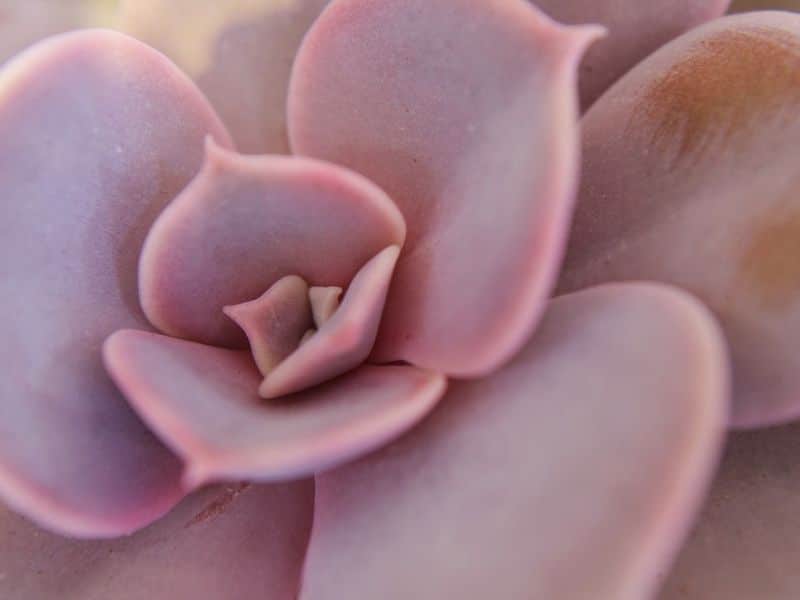
Another famous variety, Ghost Echeveria is one of the attractive ones with rosettes of spoon-shaped silvery-gray leaves. In contrast to the ghostly foliage, this plant will bloom in spring into bright coral orange and pink flowers.
E. lutea (Yellow echeveria)
Named after its vibrant yellow tipped flowers this beautiful variety often grows as a solitary rosette of narrow, reddish-purple leaves. Each leaf rolls in from the margins forming a deep hollow and giving it a boat-like appearance.
E. minima
This cute variety can only grow up to 1.6 inches in diameter. Each rosette is a tightly packed collection of blue-green leaves with well-defined points and red margins and tips. This variety is often used in succulent boards and flower arrangements.
E. nodulosa (Painted Echeveria)
Another variegated echeveria species, this variety is very attractive with apple green leaves that appear to be painted with distinct purple-red stripes on both sides and along the margins.
E. ‘Perle von Nurnberg’
This award-winning hybrid is one of the most beautiful varieties of Echeveria. It has charming rosettes of fleshy blue-green leaves with pink, red, and purple hues. Each leaf is round and pointed at the tip with a powdery coating of farina. In spring, it blooms into vibrant coral pink and yellow flowers.
E. ‘Princess Blue’
This is another charming variety that features deep blue-green leaves with purple tips arranged in a loose rosette. In spring, it produces pink and red flowers.
E. pulvinata ‘Ruby’

This shrubby echeveria pulvinata variety can reach up to 12 inches in height. From the end of each stem, small rosettes grow with thick, spoon-shaped, green leaves that are covered with silvery-white hairs. The margins and tips or each leaf take on intense red color, hence the name
E. purpusorum
This variety forms tight solitary rosettes of deep olive-green leaves mottled with reddish-brown spots. Each leaf is triangular with a rounded base. In spring, scarlet blooms arise from the center of each rosette.
E. ‘Raindrops’
This is another unusual variety of Echeveria. It grows into 6-inch rosettes with the usual gray-green, rounded leaves with pink margins. What makes it unusual is the distinct globular bump at the center of the older leaves which looks like a raindrop.
E. runyonii ‘Topsy Turvy’
This award-winning variety forms a stunning 10-inch rosette of pale blue-green leaves with pink tips. Interestingly, each leaf is inversely keeled with tips pointing inwards to the center of the rosette.
E. ‘Set-Oliver’
This shrubby variety can grow up to 12 inches in height. It forms tightly packed rosettes of hairy, lime green leaves with bright red margins. Come spring, the plant becomes adorned with showy red and yellow blooms.
E. setosa (Mexican Firecracker)
This low growing variety is characterized by its spoon-shaped green leaves covered with dense white hairs. The leaves form a rosette that can grow to 6 inches in diameter.
E. subrigida ‘Fire and Ice’ (Red Edge Echeveria)
A very attractive variety, this plant features a 9-inch rosette of wide, spoon-shaped, blue-green leaves that are deeply channeled with smooth margins. Each leaf is outlined with pink to red color.
E. tolimanensis
This is one of the unique varieties of Echeveria. It is a shrubby succulent with several rosettes growing concentrically from a central stem. But instead of the usual flat, spoon-shaped leaves, each rosette is composed of dark gray, almost blue, cylindrical leaves.
E. ‘Violet Queen’
This regal looking variety features silver-green leaves that develop a pinkish hue on the edges when stressed. The long and narrow leaves are tightly packed to form a rosette that resembles a lotus bloom. This variety is fast growing and blooms in spring, producing vibrant yellow flowers.
FAQs
Are Echeveria a good indoor plants?
Yes, Echeveria are generally good indoor plants, provided they receive sufficient bright light. Place them in a location with bright, indirect light, and ensure well draining soil to prevent overwatering.
Why are my Echeveria leaves falling off?
Echeveria leaves may fall off due to various factors, including overwatering, underwatering, or insufficient light. Check the moisture levels in the soil, adjust your watering routine, and ensure the plant receives the appropriate amount of sunlight.
Can I put my Echeveria outside?
Yes, Echeveria can be placed outside in well-draining soil and a location with plenty of sunlight. However, if you’re moving them from indoors to outdoors, do so gradually to acclimate the plant to the change in light and environmental conditions.
Why is my Echeveria plant dying?
Several factors can contribute to an Echeveria plant dying, including overwatering, poor drainage, pest infestations, or inadequate sunlight. Evaluate the plant’s environment and adjust care practices accordingly. Trim away any diseased or rotting parts and address any issues promptly.
Is it OK to put succulents in direct sunlight?
Yes, it’s generally okay to put echeveria succulents in direct sunlight, but acclimate them gradually to prevent sunburn. Ensure well-draining soil and adjust watering based on sunlight intensity.
If you love growing succulents, check these other succulent types you can add to your collection.
References
Reference List:
(1) Keen B. “Cacti and Succulents: Step by Step to Growing Success“. Crowood. 2011.
(2) Tuttle C. “Succulents“. Penguin. 2015.
(3) Pleasant B. “The Complete Houseplant Survival Manual: Essential Gardening Know-how for Keeping (Not Killing!) More Than 160 Indoor Plants“. Storey Publishing. 2012. P. 80.
(4) Bailey F. Allaway Z. “Practical Cactus and Succulent Book: How to Choose, Nurture, and Display 200 Cacti and Succulents“. Penguin. 2019. 150-152.
Close
Image by depositphotos.com/ToscaW

